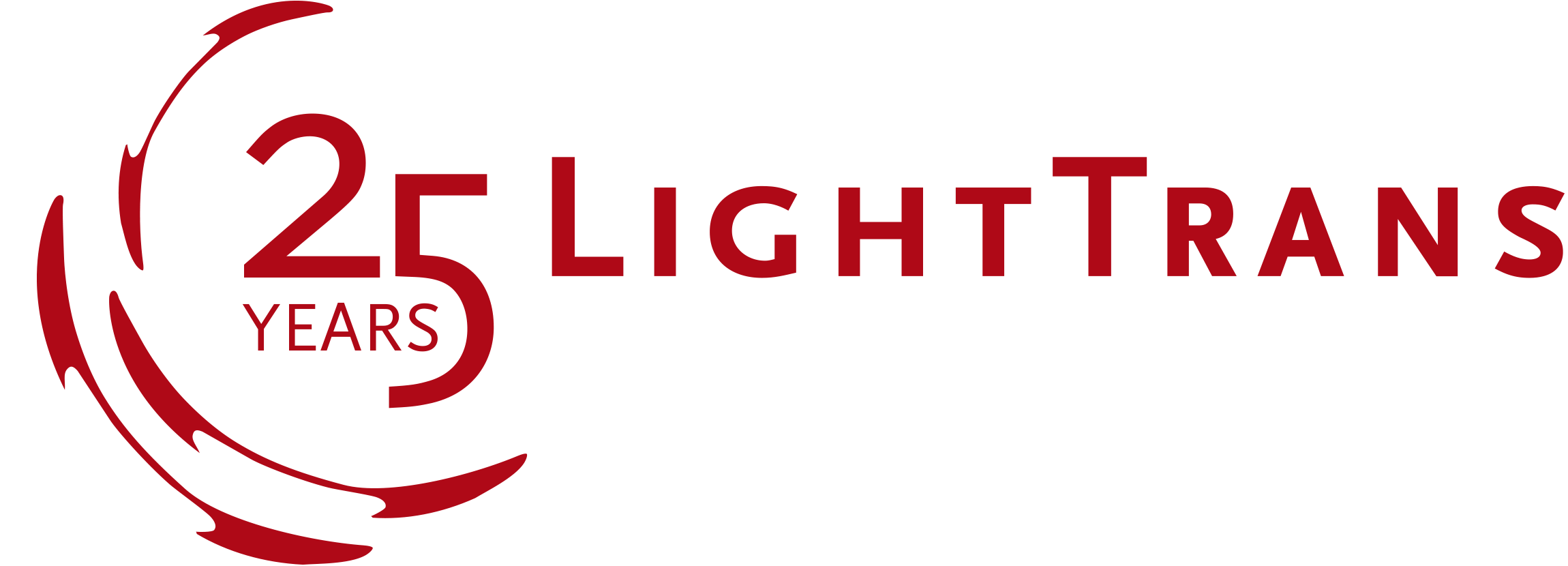What’s new in our Optical Modeling and Design Software?
Meet us in the USA this October
Learn from our optical engineering experts how to use VirtualLab Fusion efficiently.
Register for our hands-on training in Santa Clara and our seminars in Santa Clara & Tucson.
Training in Santa Clara | California
15 – 19 October 2018
Seminar in Santa Clara | California
22 October 2018
Seminar in Tucson | Arizona
26 October 2018
Grating Diffraction and Polarization Conversion
Gratings are widely used for various applications, such as spectrometers, near-eye display systems, etc. In the Grating Toolbox of VirtualLab, grating structures can be easily configured through a user-friendly software interface, and they can be rigorously analyzed using the Fourier modal method (FMM). This enables not only the calculation of diffraction efficiencies but also the investigation of polarization effects. For example, the polarization conversion for light diffraction at a sub-wavelength grating is investigated, and the results obtained from VirtualLab show good agreement with the reference.
Read moreAnalysis of Imaging Systems: Wavefront Error & Effect of Apertures
Imaging systems can be found in various optical applications and they may appear in different configurations.
Such systems can be easily set up in VirtualLab Fusion and their performance can be analyzed with e.g. the wavefront error detector. Especially, apertures in system are known to have an influence on imaging quality. VirtualLab can handle aperture effects properly and take them into consideration for the PSF/MTF calculation. As an example, such effects are demonstrated with a human eye model.
Modeling of Graded-Index Media
In optics, several effects like air turbulence or thermal effects in lasers may cause modulations in the refractive index which lead to so-called graded-index (GRIN) media.
This type of media can be useful in certain applications, e.g. flat lens, reducing aberrations and fibers. The modeling of light propagation through GRIN media is therefore important for practical optical simulations and design. In VirtualLab Fusion an efficient modeling technology has been implemented which is suitable in the cases of e.g. GRIN lens and GRIN fiber modeling.
Import of Zemax Optical Systems and Export for CAD
VirtualLab Fusion offers a user-friendly interface with Zemax, with which the user can import complete optical systems from Zemax, including the full 3D position information and the definition of the glass materials.
This enables an efficient and flexible workflow for optical designers who have access to both software packages - one optical system, constructed once, and analyzed with both Zemax and VirtualLab. On another note, optical systems and components in VirtualLab can be exported into various computer-aided design (CAD) formats, such as IGES and STL, which makes it convenient for eventual further fabrication processes.
Panel-Type Source and Its Use in Imaging System Analysis
Modern display devices (LCD) are widely used in different optical systems, e.g. image projection systems.
The panel-type source in VirtualLab can be used to model the light generated by such display devices conveniently. In order to configure the source a specific number of pixels and pixel pitch can be set. With the help of the panel-type source, the performance of the projection lenses can be analyzed, by e.g. observing the spot grid distortion in the image plane, or by checking the angular/direction behavior of the system.
Scanning Source and Evaluation of F-Theta Scanning Lens
High-quality scanning systems are of importance for many optical applications, e.g. in laser beam welding, drilling and cutting. Such systems are typically constructed with F-Theta lenses. An F-Theta lens is supposed to focus the beam onto the focal plane with a lateral displacement proportional to the scan angles.
With the help of the scanning source in VirtualLab, the performance of an F-Theta lens can be analyzed by e.g. measuring the lateral shift and the size of the focal spot for different values of the scan angles.
Release: VirtualLab Fusion 7.4.0.49
We are pleased to announce the release of VirtualLab Fusion (Build 7.4.0.49)!
The update service must include the 3rd quarter of 2018 to be able to use this update.










